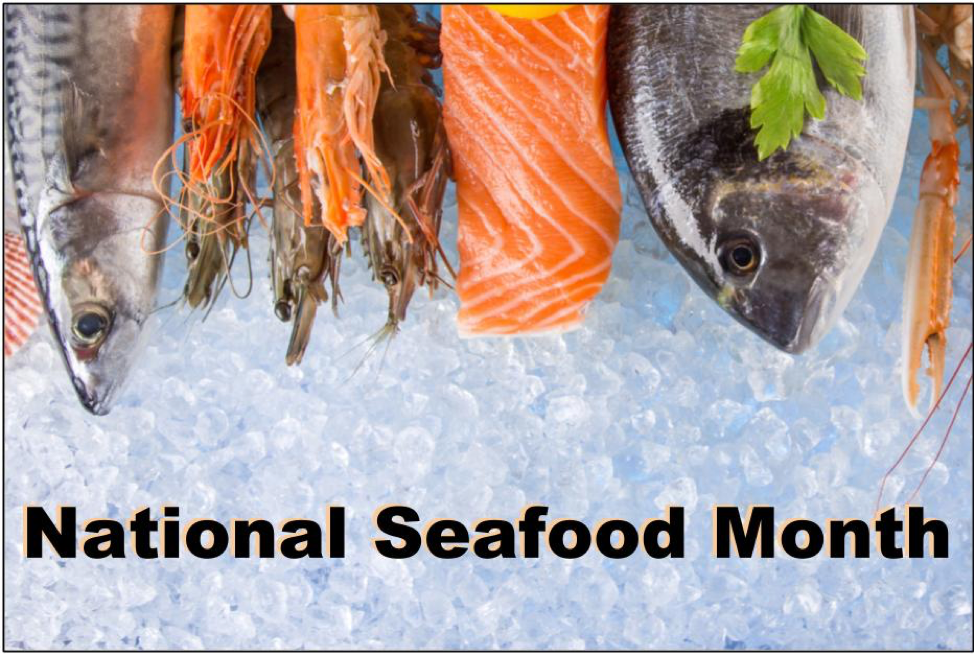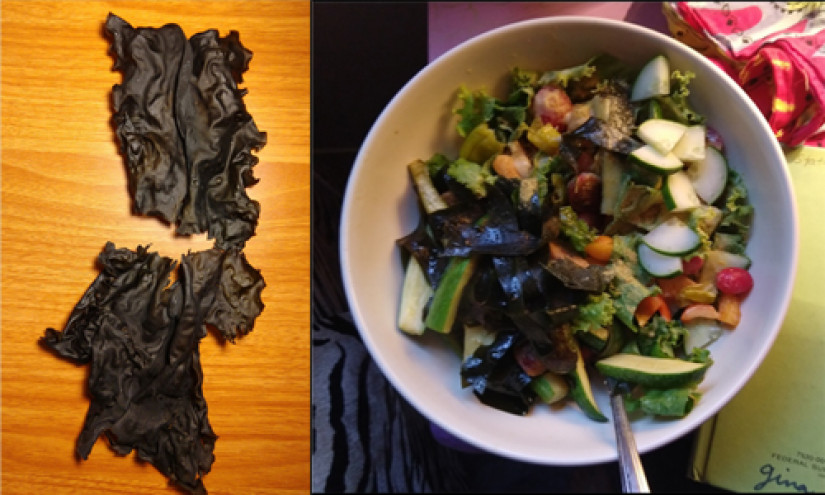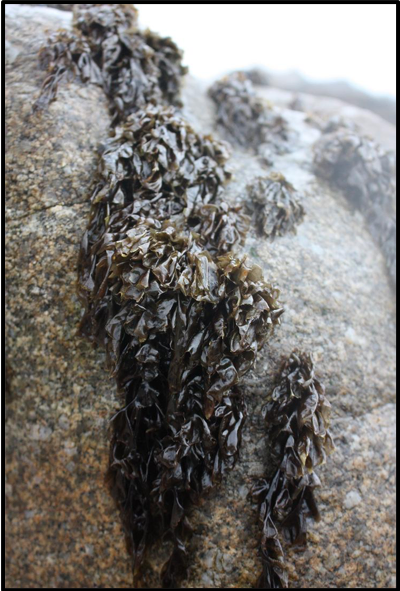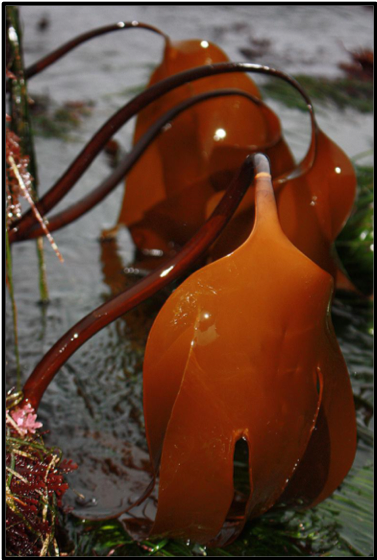Host Agency: California Department of Fish and Wildlife

What do you think of when you hear the word “seafood?” Chances are you think about tasty sea creatures like shrimp and salmon. But what about sea vegetables? Also known as seaweed or marine algae, sea vegetables are a type of healthy, vegetarian seafood that is seriously underrated. Sea vegetables are similar to land vegetables in that they need sunlight, water, and nutrients to grow, but sea vegetables don’t have roots; the whole algal body, called a thallus, takes up nutrients directly from seawater. Sea vegetables are nutritious and come in many colors and shapes like those described below and in these guides to commonly harvested marine algae in California and seaweeds of the Pacific Northwest. In California, sea vegetables are abundant and free—you don’t need a license to harvest them recreationally!
Finding sea vegetables
Ready to put seaweed on your plate? The first step is to access a rocky intertidal area. Check local natural resource websites for suggestions, making sure the area is not a Marine Protected Area, state park, or state beach where harvest is not allowed. Next, plan your visit during a low tide (zero ft. or lower) using NOAA’s tide predictions. Arrive 1–2 hours before the low tide and leave 1–2 hours after. Finally, check the marine forecast to avoid storms and high waves.
Harvesting sea vegetables
To harvest sea vegetables, you just need a few simple tools: a bucket or plastic bag, scissors or a sharp knife, sturdy shoes, and some natural resource knowledge. Algae are the base of the intertidal food web, so harvest them sustainably: do not remove the whole thallus, but cut the ends so it can regrow. Additionally, there are laws prohibiting selling marine algae without a commercial algae harvesting license as well as a 10-lb. wet weight limit per person per day for recreational harvest, which does not require a license. It is unlawful to harvest sea palm (Postelsia palmaeformis) or seagrass (Phyllospadix spp. or Zostera marina). (Fun fact: seagrass is not an alga, but a true flowering plant!) Similar rules may apply in Oregon and Washington, though a license may be required.

Sea vegetable safety
As with any wild-harvested seafood, seaweed harvested from contaminated water, e.g. near sewage outfalls or storm drainage pipes, can contain pathogenic microbes like Escherichia coli or Vibrio parahaemolyticus. Check the area for signs warning of contaminated water. Microbes can largely be removed by rinsing seaweed in clean water and killed by cooking. Harvest fresh, living, seaweed, not detached algae washed up on the shore. Finally, practice intertidal zone safety: always face the ocean, keep at least one hand free for balance, and watch where you step!
Cooking with sea vegetables
Unless you’re a sea snail, most sea vegetables are not meant to be eaten fresh! They are extremely chewy and can be a little slimy. To prepare your seaweed, rinse it in tap water to remove surface impurities and herbivorous hitchhikers. If you don’t plan to use your seaweed right away, store it fresh in the refrigerator for a few days or dry it (recommended). Drying can be done in the oven (on warm), in the sun, or in a dehydrator, and then it can be stored in an airtight container for months.
You can cook most sea vegetables by frying or roasting in the oven for a few minutes. They’re done when they’re very brittle. After cooking, you can eat them plain, grind them up and use them as a salty seaweed sprinkle topping, use them like any other vegetable in your recipes, or use them to flavor stocks for cooking soup or rice. Find more great cooking tips in this Sea Greens 101 article by Heated!

Common northern California sea vegetables
*All photos are from CDFW unless stated otherwise. For more photos & identification guides, visit the CDFW website.
Nori
Scientific name: Pyropia perforata
General category: Red algae
Description: Grayish-green to brownish-purple and often very frilly. Smooth and one cell thick; you can see through it!
Used in sushi, ground up and flattened into sheets
Nori makes great chips when fried in coconut oil!
Sea lettuce
Scientific name: Ulva lactuca
General category: Green algae
Description: Smooth, bright green and in broad sheets. Two cells thick; you can see through this one as well!
Fry or roast, but not as good for chips
Can be added fresh to salads
Wakame
Scientific name: Alaria marginata
General category: Brown algae in the kelp family
Description: Dark green, wide, smooth ribbons with thick midrib; very long (up to 19 ft!)
Wakame is used traditionally in miso soup; it can also be used to flavor rice or soup stock
Since it is so long, it is great for making noodles!
Kombu
Scientific name: Laminaria setchellii
General category: Brown algae in the kelp family
Description: Dark greenish-brown. Slender, erect stipe (stem) leading to wide, smooth blade with many dangling finger-like strips.
Good in soup stock or to add in rice or bean water.



